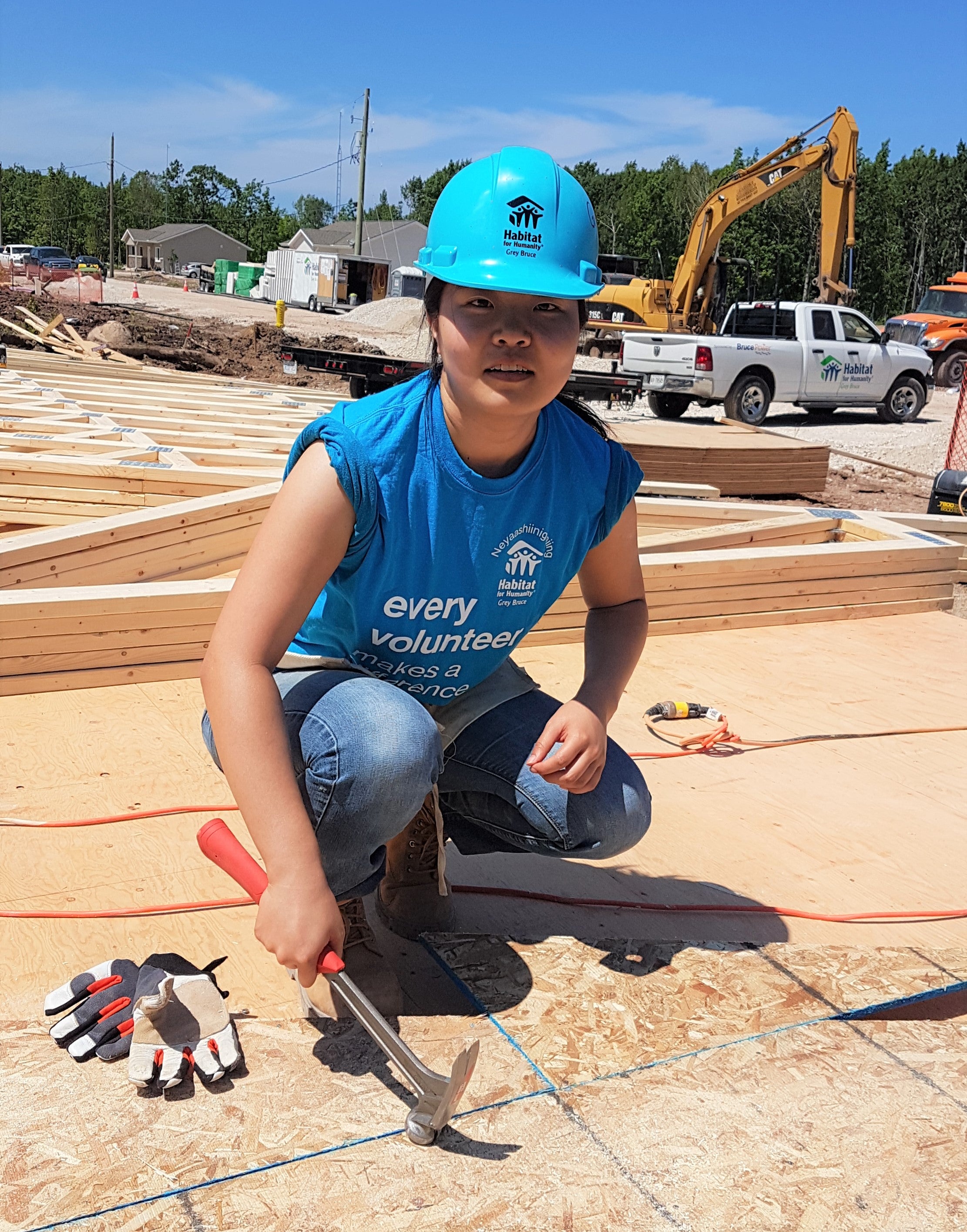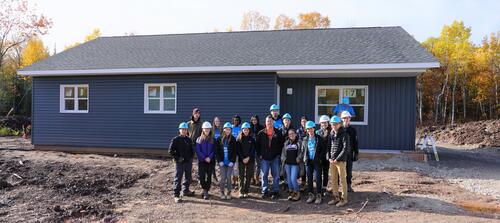Student team finishes second in Solar Decathlon with house designed for Indigenous family
By Brian Caldwell
Faculty of Engineering
After three years of hard work, members of the Warrior Home design team were thrilled to finish second overall this week in an international competition that challenges university students to design and build highly efficient buildings.
But regardless of the outcome in the virtual finale of the Solar Decathlon, a nine-team event sponsored by the U.S. Department of Energy, more than 200 student contributors at the University of Waterloo already felt pretty good about it.
Their entry in the contest was a net-zero energy bungalow that has been home to an Indigenous family on the Neyaashiinigmiing Reserve near Wiarton, about two hours north of Waterloo Region, since its completion in the fall of 2019.
Students from all six faculties at Waterloo worked with members of the Chippewas of Nawash community and Habitat for Humanity Grey Bruce to custom-design the house as part of a larger, 19-home project.
The end result – a home that is fully powered by solar panels and requires less than half the energy of a standard house its size – provided homeowner Melissa Millette and her four children, including a daughter with special needs, with an affordable home close to her extended family.
“It felt like I won the lottery,” Millette says.
 Gongyi Zhang, a mechanical engineering student who graduated last year, works on a home at the Habitat for Humanity project site.
Gongyi Zhang, a mechanical engineering student who graduated last year, works on a home at the Habitat for Humanity project site.
Having such a direct impact added a rewarding element for the Warrior Home team, which saw members come and go as an extra year was added to the two-year contest by COVID-19.
In addition to making the house highly energy efficient with features such as an electric heat pump, an air-tight design, a heat recovery ventilator and extra insulation between extra-wide studs, they consulted with Millette to ensure it met her family’s particular needs.
“The homeowner tells us the house is performing as we expected it to - with no drafts, so they’re warm and toasty – so I think that’s a job well done,” says Gabrielle Tuck, a fourth-year civil engineering student who is senior design lead for the team.
Groups of students visited the site five times during construction to get their hands dirty working shoulder-to-shoulder with Habitat for Humanity volunteers, community members and the eventual homeowners.
“That tangible social impact was a huge part of what made our build really unique,” says Jeffrey Ren, a fourth-year planning student who is senior project manager.
 Members of Warrior Home pose with other stakeholders at the building site.
Members of Warrior Home pose with other stakeholders at the building site.
“It also provided a wonderful opportunity to develop leadership skills and gain exposure to a multidisciplinary team. For me personally, the project introduced aspects of engineering that I never would have been exposed to through my planning education.”
Warrior Home won US $25,000 at an earlier stage of the contest – money it donated to the housing project – and was up against university teams from as far afield as The Netherlands and Chile for judging in 10 categories from April 15 and 18.
In addition to its second-place overall finish, the team took top spot in one category, financial feasibility and affordability, and top-three honours in four others.
“The process was rooted in the Solar Decathlon competition, but it really became much more than that for our team,” Tuck says.
Top photo (listing photo): Melissa Milette (left to right) poses with her two children, Riley and Reichal, outisde their new net-zero energy house.